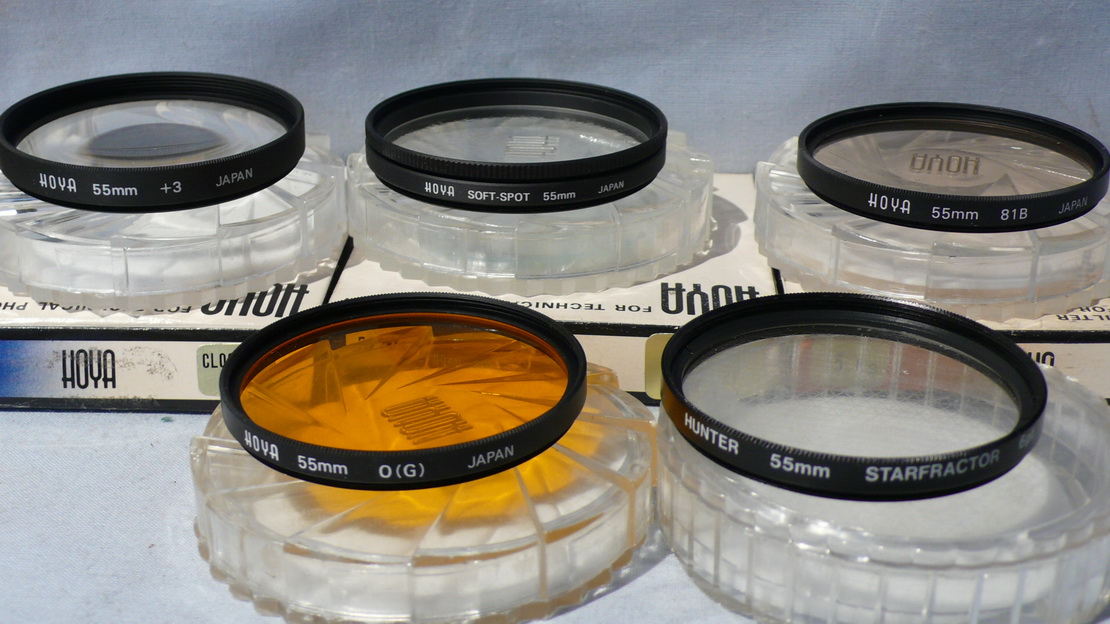In the most basic definition, a camera filter is a transparent or translucent optical element that alters the properties of light entering the camera for the purpose of improving the image being recorded. In terms of usage to a photographer, a filter’s importance goes way beyond the scientific function it serves. Be it adding contrast, sharpness, color, intensity or simply, character to the image, a filter is a hidden weapon in the photographer’s arsenal that, when used in the right way at the right time, makes for some truly breathtaking visuals. These camera accessories can be inserted in the optical path by being mounted onto a holder, most commonly a glass or plastic disk with a metal or plastic ring frame, which can be screwed in front of the lens or clipped onto it. Today, the sheer variety of filters available easily make the option worth experimenting with; so be it glass ones, filters made from resin plastic or polyester and polycarbonate ones, there will definitely be something suiting your need and style.
Polarizing Filters
To generally increase outdoor color saturation and contrast and decrease reflections, most helpful are polarizing filters. And these are also one of the only filters which can’t be replicated using digital photo editing. An indispensable tool in every photographer’s bag, they require extensive experimentation and testing to develop an intuition for how a polarizer might impact a picture. The scientific working of a polarizer is fairly simple; it linearly filters out light in a particular direction in the first stage and in the second stage it circularly polarizes the light before it enters the camera. What this does basically is reduce the reflections from surfaces such as glass and water, and darken a blue sky. It’s placed in front of a camera lens and filters out sunlight which has been directly reflected toward the camera at specific angles, thus diffusing the remaining light making it more colorful. However, this requires a longer exposure time since light has partially been discarded.
A polarize filter will be capable of its maximum effect when one’s line of sight is perpendicular to the direction of the sun, but this doesn’t mean that this is where the image will appear to be more affected. By rotating your filter, you can toggle between angles that appear most polarized, and you should keep looking at the camera’s LCD or through its viewfinder to continuously foresee results. As the result primarily depends on the angle, the image can appear to be uneven when using wide angle lens.
UV Filters
One of the most commonly seen around are Ultraviolet (UV) filters, primarily used to protect the front element of a camera lens since they’re clear and don’t noticeably affect the image. We may not be seeing it, but we all know that we’re surrounded by UV light all the time outdoors. What we don’t know is that film, as well as video, often exhibit a greater sensitivity to what is to us invisible. UV rays can show up as a bluish color cast with color film or can cause low contrast haze that diminishes details, especially when viewing far away objects in color or in black and white. With film cameras, UV filters reduce this haze and improve contrast by minimizing the amount of UV light that reaches the film. However, UV filters also have the potential to decrease image quality by increasing lens flare, adding a slight color tint or reducing contrast. Keeping your filter very clean will help counter reducing in image quality and using high quality UV filters will prevent any visible color cast. It’s often a point of debate whether the protection provided by UV filter outweighs the reduction in quality, but when expensive SLR lenses are in question, protection becomes the deciding factor as cost of replacing the filter is quite lower in comparison of replacing lens.
ND Filters
Another important filter in photography is Neutral Density filter, which in simple terms is a semitransparent piece of glass that, when places in front of the camera lens, obstructs a precisely controlled fraction of light uniformly, without altering image sharpness or contrast. By reducing the amount of light reaching the camera’s sensor, they are most commonly used when the given range of possible apertures does not allow for a sufficiently long exposure time. This can emphasis motion, or make an otherwise tumultuous scene appear surreal and tranquil.
Alternatively an ND filter also enables larger aperture, leading to sharper photos and shallower depths of field. Either way this is a powerful tool, not given its due appreciation often, but worthy of a deeper look. They are one of the simplest filters to use with results not easily replicable digitally. Neutral density filters are used to create any, or combinations of a longer exposure time, a shallower depth of field and a sharper photograph.
GND Filters
Another hidden secret of successful landscape photographers is the Graduated Neutral Density (GND) filters or Grad filters, which serve as an essential tool for capturing scenes with a broad dynamic range. Nowadays the grad ND effect can be applied digitally, either during RAW development or in subsequent photo editing by using multiple exposures and combining them later during editing, yet using the physical filter while clicking pictures will undoubtedly produce a higher quality result, having a huge impact on the eventual picture composition.
The filter is basically an optical device that allows for variable light transmission. Typically half the filter is of neutral density which transitions, either abruptly or gradually, into the other half which is clear. Thus the filter can be hard edged, causing sudden change in brightness, or be soft edged offering smoother changes from light to dark. For situations where an extremely gradual blend is required, an attenuator is used, changing density almost throughout the length. In general when using grad ND filters, wider angles of view are often enhanced more, primarily because these encompass a correspondingly greater range of brightness.
Other Filters
Typically, the optical effects all involve bending a percentage of images forming light from its original path to de-focus it. The most commonly used filters in this category are Diffusion Filters and Cool and Warm Filters. Diffusion filters soften subjects generating a dreamy blur, most often used in portraits. With such filters higher contrast scenes appear sharper, needing more diffusion than scenes with lower contrast. These requirements also vary with other conditions, like color allows less diffusion than black and white, or like smaller file formats and large-screen projectors will allow lesser haze. The second most common way is transparent diffusion, where tiny globs of acrylic are deposited on one surface of the lens, allowing it to act as different micro lenses to diffuse the light. Another popular option to play around with in photography are cooling and warming filters which change the white balance of light reaching the camera’s sensors.
Now that we have seen the different types of filters at our disposal, it is also important to understand both sides of the coin before rushing to experiment too much as they can have an adverse effect on the image. Using a filter means you are effectively introducing an additional piece of glass between the camera’s sensor and he subject, potentially leading the reduced image quality.





